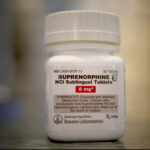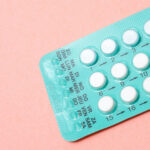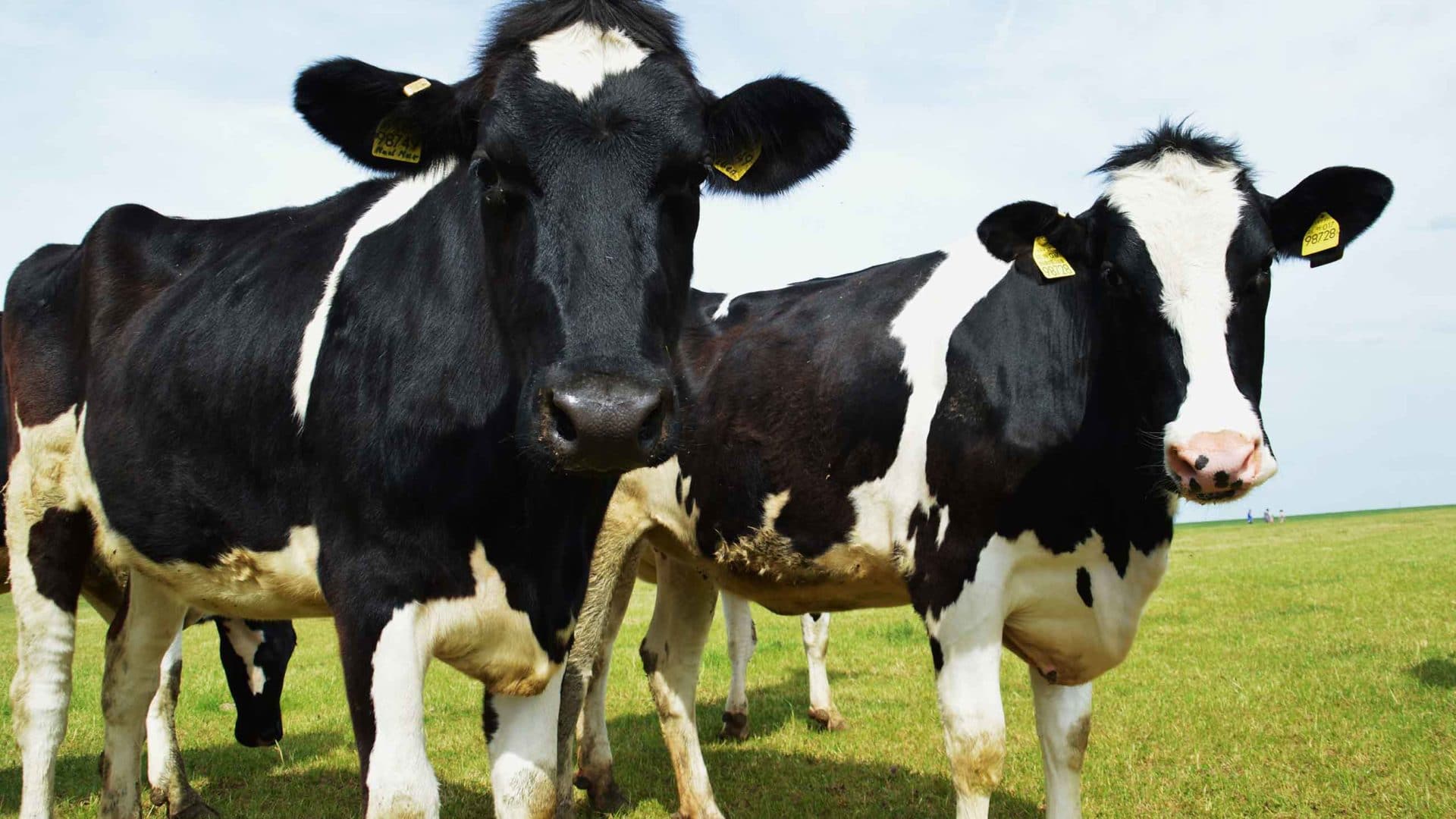From Two Bulls, 9 Million Dairy Cows
There are more than 9 million dairy cows in the United States, and the vast majority of them are Holsteins, large bovines with distinctive black-and-white (sometimes red-and-white) markings. The amount of milk they produce is astonishing. So is their lineage. When researchers at the Pennsylvania State University looked closely at the male lines a few years ago, they discovered more than 99 percent of them can be traced back to one of two bulls, both born in the 1960s. That means among all the male Holsteins in the country, there are just two Y chromosomes.
“What we’ve done is really narrowed down the genetic pool,” says Chad Dechow, one of the researchers.
The females haven’t fared much better. In fact, Dechow — an associate professor of dairy cattle genetics — and others say there is so much genetic similarity among them, the effective population size is less than 50. If Holsteins were wild animals, that would put them in the category of critically endangered species. “It’s pretty much one big inbred family,” says Leslie B. Hansen, a Holstein expert and professor at the University of Minnesota.
Any elementary science student knows that genetic homogeneity isn’t good in the long term. It increases the risk of inherited disorders while also reducing the ability of a population to evolve in the face of a changing environment. Dairy farmers struggling to pay bills today aren’t necessarily focusing on the evolutionary prospects of their animals, but Dechow and his colleagues were concerned enough that they wanted to look more closely at what traits had been lost.
For answers, the researchers have begun breeding a small batch of new cows, cultivated in part from the preserved semen of long deceased bulls, to measure a host of characteristics — height, weight, milk production, overall health, fertility, and udder health, among other traits — and compare those to the modern Holsteins we’ve created. The hope is that they might one day be able to inject some sorely needed genetic diversity back into this cornerstone of livestock agriculture, and possibly reawaken traits that have been lost to relentless inbreeding.
“If we limit long term genetic diversity of the breed,” Dechow says, “we limit how much genetic change can be made over time.”
In other words, we could reach a point where we’re stuck where we’re at. There will be no more improvement in milk production. Fertility won’t improve. And if a new disease comes along, huge swaths of the cow population could be susceptible, since so many of them have the same genes.
Holsteins today are responsible for the vast majority of milk we drink and much of our cheese and ice cream. For at least the past century, these animals have been prized for their voluminous output. Over the last 70 years or so, humans have introduced a variety of methods to ramp up production even further. In 1950, for example, a single dairy cow produced about 5,300 pounds of milk a year. Today, the average Holstein is producing more than 23,000. In 2017, a prize-winning cow named Selz-Pralle Aftershock 3918 cranked out 78,170 pounds of milk — more than 200 pounds every single day.
“These cows are real athletes,” says Hansen.
This benefits consumers by keeping food prices low. It benefits farmers because they save on costs when fewer cows produce the same amount of milk. It also benefits the environment because a cow’s digestive system produces considerable amounts of methane and waste. (Although high-producing Holsteins consume more energy and generate more waste per cow, researchers estimate that the efficiency gains result in significantly reduced environmental impacts overall.)
Part of this success story has to do with changing the way Holsteins are raised and managed. But the biggest change has been in the way cows are bred. Long ago, farmers would bring in bulls from other farms to get their cows pregnant — a way of ensuring genetic diversity, or “stirring the pot,” as Hansen says. In the 1940s, they began to use artificial insemination. This way, a single dose of bull semen could be used to impregnate a whole lot of heifers. Soon, technology allowed the semen to be frozen, which meant a bull could father calves for decades, even long after he was dead. Meanwhile, the dairy world was keeping very detailed records, so the bull studs who sell the semen could tell which bull went on to produce the best offspring — and by the best offspring, they meant the daughters who produced the most milk.
By this point, a highly sought-after bull would sire thousands of daughters. Carlin-M Ivanhoe Bell, a bull born in 1974, had more than 80,000 offspring. Most bulls have fewer, though their progeny still number in the thousands. By the 80s, it was clear inbreeding was increasing significantly.
In the early days of artificial insemination, bulls would have to prove their merit in real life. That is, they’d sire 100 daughters, then when those daughters calved and began producing milk, their output was measured. The better the output, the more marketable the bull. This “progeny testing” was a valuable process, but it took several years to determine if a bull was any good.
In 2009, new technology came along: big data and genomic selection. Today, a bull’s marketability is determined by a computer. A complex algorithm analyzes the bull’s genetic makeup, taking into account the health of his offspring, their milk production, the fat and protein in the milk, and other traits, to come up with figures that rank him against other bulls. The key figure is called lifetime net merit. It represents the average amount of money a farmer can expect to earn over the offspring’s life by choosing this bull over another one.
While this allowed farmers to more efficiently evaluate animals across many key traits, the process also led to even higher rates of inbreeding. The “inbreeding coefficient” for Holsteins is currently around 8 percent, meaning an average calf gets identical copies of 8 percent of its genes from its mother and its father. That number is in comparison to a baseline of 1960 — and it continues to increase by .3 or .4 every year.
“Inbreeding is accumulating faster than it ever has,” Dechow says.
But is 8 percent too much? Dairy experts continue to debate this. Some argue that Holsteins are doing their job, producing a lot of milk, and that they’re a relatively healthy bunch. Hansen, however, notes that if you breed a bull to his daughter, the inbreeding coefficient is 25 percent; in that light, 8 seems like a lot. He and others say while inbreeding may not seem like a problem now, the consequences could be significant.
Fertility rates are affected by inbreeding, and already, Holstein fertility has dropped significantly. Pregnancy rates in the 1960s were 35 to 40 percent, but by 2000 had dropped to 24 percent. Also, when close relatives are bred, it’s more likely for cows get two copies of unwanted recessive genes, where serious health problems could be lurking.
“Something needs to change,” Hansen says.
For Dechow, the concern is the rate of increase and what that means for the future of the breed. “Imagine you’ve got a cow who has 100 really good genes and 10 really horrible genes. You eliminate that cow from your breeding program because she’s got 10 horrible genes,” he says, and “you’ve lost her 100 good ones, as well. You’re losing long-term genetic potential.”
Dechow grew up on a dairy farm, so long before he knew the ins-and-outs of the cow’s genome, he could see some of what was happening.
Holsteins look very different than they did 50 years ago. For one thing, they’ve been bred to have longer and wider udders, rather than deep ones. A deep udder can touch the ground, making it much more prone to infection or other problems, so that’s a change for the better. But other changes could be problematic. For example, modern Holsteins are bred to be tall and thin, to the point of boniness. That thinness is a byproduct of milk production, because “they’re directing the energy they consume towards milk,” Dechow says.
But it’s also something of an aesthetic choice. The ideal Holstein cow — at least in the view of people who judge these things — is “feminine and refined.” That means thin and angular. The problem is, a tall, thin cow isn’t necessarily the healthiest cow and shorter and rounder cattle are more likely to get pregnant.
A few years ago, Dechow and others started to wonder, just how significant was the inbreeding and loss of diversity? In the early 50s, there were about 1,800 bulls represented in the population. They knew there were fewer today, but they had no idea how few. Dechow and his colleagues Wansheng Liu and Xiang-Peng Yue analyzed the paternal pedigree information of nearly 63,000 Holstein bulls born since the 1950s in North America.
“We were a little bit surprised when we traced the lineages and it went back to two bulls,” he says. They’re named Round Oak Rag Apple Elevation and Pawnee Farm Arlinda Chief. Each one is related to about half the bulls alive today. Essentially, Elevation and Chief outcompeted every other bull on the market. Even Select Sires, a company that is in the business of selling bull semen, was surprised by the findings. Charles Sattler, a company vice president, sees the news as a bit of a reality check, but not a cause for alarm. “Probably the biggest concern is, are there any really valuable genes we may have lost along the way that we could make use of today?” he wonders.
Not too long ago, there was another Y chromosome represented, that of Penstate Ivanhoe Star, born in the 1960s. His decline demonstrates one problem with all this inbreeding. In the 1990s, dairy farmers around the world started noticing calves being born with such serious vertebrae problems, they didn’t survive outside the womb. Around the same time, calves were being stillborn with a condition called bovine leukocyte adhesion deficiency. It turns out Star, and his prolific son, Carlin-M Ivanhoe Bell, had problematic recessive genes that didn’t come to light until a few generations of inbreeding.
After this discovery, farmers stopped breeding cows to Star’s descendants and that problem was resolved. But could other problems be lurking within the chromosomes of our remaining Holsteins? What had been lost with all this inbreeding? These questions troubled Dechow enough that he began searching out some of those old genes.
That required digging into the archives of the National Animal Germplasm Program in Fort Collins, Colorado. It’s like a seed bank, except it collects ovarian tissue, blood, and semen from domesticated animals, and it holds about 7,000 cocktail-straw-sized semen samples from Holstein bulls.
Dechow’s team found two that weren’t related to Chief or Elevation, so they took those samples, got eggs from top-notch females, and created embryos to implant into surrogate Penn State heifers. The idea was to combine the half-century-old Y genetics with DNA from females who are among the finest examples of modern-day milk production. Over the course of 2017, the animals wound up giving birth to 15 calves, seven of them male. The oldest of these animals are about two and two now have calves of their own.
Every parameter in the development of these cattle will be measured, and their DNA is being analyzed and compared to the general population. It turns out that not a lot is known about the Y chromosome, so this is an opportunity to use this newly-introduced variation to understand it better. Semen samples were also taken from the bulls and sent to the germplasm bank in Colorado. Dechow can already see a difference on the ground in the way these cattle look. They’re a bit shorter than most Holsteins, and also heavier. They’re also a little less docile than average.
Select Sires has collected semen samples from the bulls and run them through its grading program to so-so results; they came out in the middle of the pack. They’ve offered some of these samples for sale to dairy farmers, but sales so far have been minimal. Dairy farmers today are already struggling financially, and it’s not easy to convince them there’s a benefit to getting DNA from average bulls.
Dechow is still hopeful that there will be more to gain from this research once the cattle mature.
“My pie-in-the-sky dream,” Dechow says, “is that we’ll able to show these old genetics still have something to offer.”
Maureen O’Hagan is a Portland, Oregon-based writer who was on the staff at The Washington Post and The Seattle Times, where she won numerous national journalism awards. She is also the author of “The Woman in the Strongbox,” a true-life mystery story.











Comments are automatically closed one year after article publication. Archived comments are below.
My dad was a renowned Holstein breeder 80s-2000. I have his tank still has some of those old sires such as elevation, fury, and mark. The tank is in the process of inventory. Anyone interested in this semen contact me by email at [email protected]
Global warming/climate change: It’s NOT the cows!
Add to the 60-100+ million bison the millions of deer, pronghorns, moose, sheep, goats and yes, even caribou that lived in what became the continental U.S. These are all ruminants with the same type of digestive system as cattle – whether cows, bulls, or steers. Methane and CO2 levels in the atmosphere, as preserved in air pockets in ice cores, were significantly lower then than now.
When humans disrupt ecosystems, problems are created. This includes the industrialization of what is inherently a biological process: food production. Disconnecting animals from the land and confining them in cages, warehouse buildings, or feedlots can create problems- depending on how these Confined Animal Feeding Operations (CAFOs) are managed. Don’t blame female cattle for the little bit of methane they eructate (belch) from the microbes that digest the plants they eat- far, far more methane is produced by human sewage systems. And rice paddies. And massive amounts leak from oil and natural gas wells, and gas pipelines. Healthy grasslands complete with cattle ABSORB a lot of that excess methane production. Grasslands cannot be healthy or effectively absorb methane without grazing animals, so the net effect of cows actually REDUCES atmospheric methane levels.
By the way, the plural which includes both males and females is cattle (not cows).
How to improve my breed to the maximum level of Holstein fresian that can satisfy me with maximum milk production and where to get the quality semen for my cows?
I find the article interesting,my question is,are semen from select sires weak !?
It is really damaging with the advance use of science. What is the next for genetics study. In many developing countries, Holstein crosses with local for upgrading as well as to other breeds.
What about the other breeds like Jersey?
Really, that was amazing situation, it is better to dilute the existing population, more of by using natural mating systems to regain the diversity of genes. Because, most of researchers focuses on fertility of high producing breeds constrained by several factors. most of these breeds use artificial insemination, estrus sign and heat period usually not easily detectable, may be through time they loose some of characters & consequently traits. thanks for sharing information.
Despite the seriousness of the issue the need to consider comments of the following types is immense.
“…. there isn’t a farmer alive that is going to lose milk to gain diversity” and “Why would anyone care if there is a bad gene as long as you get 50,000 lbs of milk”. Is there a way the cost of ‘diversifying’ can be born by the public? The diversity genes at the moment are considered as a public good and it will be difficult to convince dairy farmers to bear the cost of maintaining them.
The commercial farmers might *not* bear the cost of genetic preservation. But small, noncommercial farmers and homesteaders might. These are farmers who aren’t necessarily making their primary living off of their farms, and may indeed be losing money or equity on them. On farms like these, heritage and rare breeds of livestock are more likely to be perpetuated. These breeds are where genetic diversity can be maintained, not necessarily within a specific breed’s gene pool (especially among the rare breeds) but within the species as a whole.
Genetic insurance against a monoculture will likely remain with small-scale farms and noncommercial breeds of livestock rather than with commercial farmers and breeds themselves, as well as gene banks to which small farms also contribute.
French Bulldogs. Been around since 1800’s, but can’t reproduce or give birth on their own. On one hand you could argue genetic diversity played a large part in determining who survived the bubonic plague. On the other hand given the choice why wouldn’t everyone want the genes that survived the plague, or just use penicillin.
It would interesting to the genomic numbers on the offsping.
Very interesting, always the trolls,
These professors forget to tell that a lot of genetic diseases are tackled by providing info of a whole list of them in a code:
Genex had a very good bull but he was a MuleFoot carrier:
No farmer wanted that
Today every bull has a long list of possible defectness
what list of defects??, please educate me.
Did you research ABC REFLECTION SOVERIGN This was a Canadian Bull back in the 1950.s and he was 25% to 50% Ayrshire, that is where your Red factor came from.
This bull was used extensively in Ontario Holstein herds for better type and very successful.
I invite you to check it out by letting a red and white calf grow its horns and see if they are Holstein horns or Ayrshire horns.
Is that why most Canadian Holsteins were very good type but about 25 percent short in the milk Paul compared to US counterparts???
The red Holsteins came from a recessive hidden gene and not from the Ayrshires !
This is a fable
Edward. Do you have proof to back up your claim on ABC Reflection Sovereign??
The Red Factor did not originate with this bull. There is plenty of documentation on this subject.
I look forward to seeing your scientific evidence.
Wait, bigger, thinner and more milk is what we’ve sold. Not shorter, heavier or MEANER.
But, I have question, did they do this with the rest of the breeds? Swiss should be easier..
I haven’t seen the bulls being offered. I would use them. Who else could they have selected? Rosafe caliban was good in type and alster pilot was good un production
I have not seen it offered either. I would use it. Rosafe caliban was a good type bull Zimmerman alster pilot was bad in type but good in production. What other bulls could they have used?
I find the article interesting. Also there isn’t a farmer alive that is going to lose milk to gain diversity. Cows are on the farm for what 1.5 lactations? There are less small family farms that care about how long the animal will last. Why would anyone care if there is a bad gene as long as you get 50,000 lbs of milk.
I have not seen my Select Co-op offer these bulls for sale. I have issues with the bloodlines used. Type was lousy. I think there are others that would be better.
That is the whole problem with selling living creatures. They shouldn’t be sold for their milk. I’m sorry.